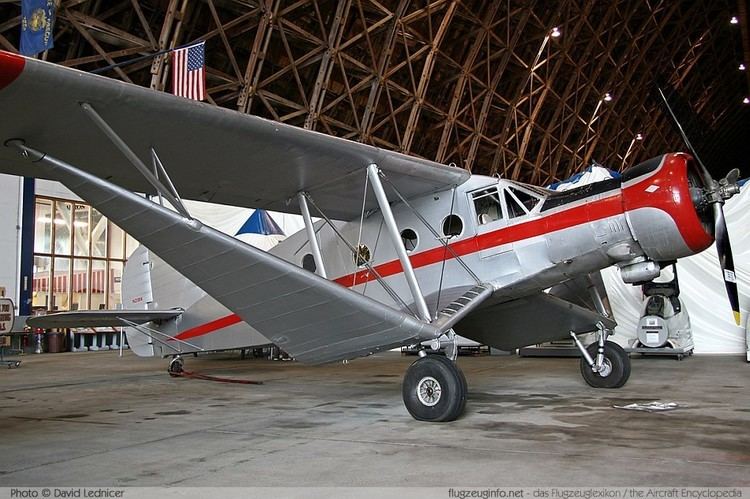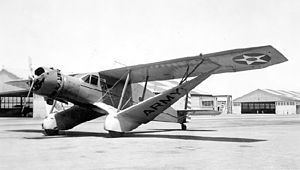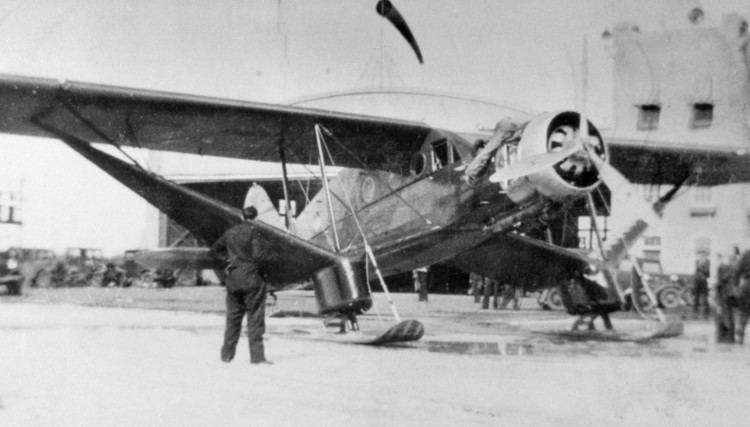Top speed 267 km/h Length 13 m Manufacturer AviaBellanca Aircraft | Wingspan 20 m First flight 1930 | |
 | ||
Bellanca aircruiser hr fly in 9 10 16
The Bellanca Aircruiser and Airbus were high-wing, single-engine aircraft built by Bellanca Aircraft Corporation of New Castle, Delaware. The aircraft was built as a "workhorse" intended for use as a passenger or cargo aircraft. It was available with wheels, floats or skis. The aircraft was powered by either a Wright Cyclone or Pratt and Whitney Hornet engine. The Airbus and Aircruiser served as both commercial and military transports.
Contents
- Bellanca aircruiser hr fly in 9 10 16
- Design and development
- Operational history
- Airbus
- Aircruiser
- Operators
- Survivors
- Specifications 66 70 Aircruiser
- References

Design and development

The first Bellanca Airbus was built in 1930 as the P-100. An efficient design, it was capable of carrying 12 to 14 passengers depending on the cabin interior configuration, with later versions carrying up to 15. In 1931, test pilot George Haldeman flew the P-100 a distance of 4,400 miles in a time aloft of 35 hours. Although efficient, with a cost per mile figure of eight cents per mile calculated for that flight, the first Airbus did not sell due to its water-cooled engine.
Operational history

The next model, the P-200 Airbus, was powered by a larger, more reliable air-cooled engine. One version (P-200-A) came with floats and operated as a ferry service in New York City, flying between Wall Street and the East River. Other versions included a P-200 Deluxe model, with custom interiors and seating for nine. The P-300 was designed to carry 15 passengers. The final model, the "Aircruiser," was the most efficient aircraft of its day, and would rank high amongst all aircraft designs. With a Wright Cyclone air-cooled supercharged radial engine rated at 715 hp, the Aircruiser could carry a useful load greater than its empty weight. In the mid-1930s, the Aircruiser could carry 4,000 lb payloads at a speed of between 145 and 155 mph, a performance that multi-engine Fokkers and Ford Trimotors could not come close to matching.

In 1934, United States federal regulations prohibited single-engine transports on United States airlines, virtually eliminating future markets for the Aircruiser. Where the workhorse capabilities of the Aircruiser stood out was in Canada. Several of "The Flying Ws", as it was commonly dubbed in Canada, were used in northern mining operations, ferrying ore, supplies and the occasional passenger, into the 1970s.
Airbus

Aircruiser

Operators
Survivors
The last flying Aircruiser, "CF-BTW," a 1938 model, after serving in Manitoba, is now on display at the Erickson Aircraft Collection, in Madras, Oregon.
Another Bellanca Aircruiser, "CF-AWR" named the "Eldorado Radium Silver Express", built in 1935, is under restoration at the Western Canada Aviation Museum, Winnipeg.
Specifications (66-70 Aircruiser)
General characteristics
Performance
